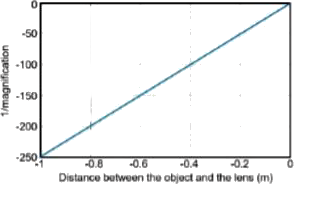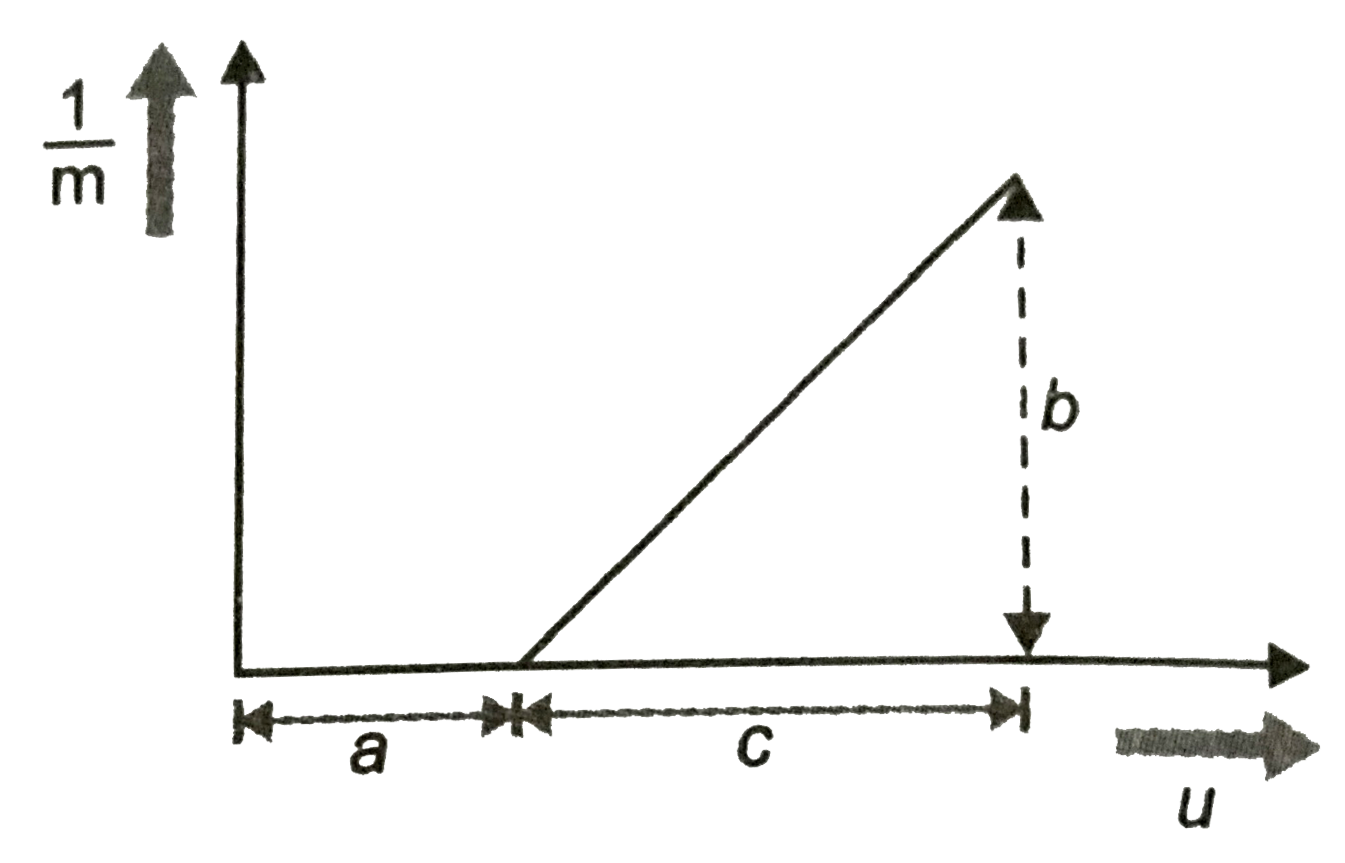Consider the following diagram representing magnitude of magnification against image distance for a convex lens:
_E01_094_Q01.png)
Column IColumn II(A)Focal length of the lens(p)Inverse of slope of line(B)Intercept on x- axis(q)Unity(C)Intercept on y-axis(r)Focal length(D)Magnitude of slope of the line(s)(s)Inverse of the focal length
The correct Answer is:(A)-p (B)-r (C)-q (D)-s
m=v−ff=vf−1(∴y=mx+c)
m = slope = 1f (magnitude of slope of line)
Intercet on y axis c =-1 (unity)
Intercet on x-axis ⇒m=0
⇒0=vf−1⇒v=f(focal length)
Topper's Solved these Questions
- BOOK - ALLENCHAPTER - GEOMETRICAL OPTICSEXERCISE - EXERCISE-04[A]23videos
GEOMETRICAL OPTICS
- BOOK - ALLENCHAPTER - GEOMETRICAL OPTICSEXERCISE - EXERCISE-04[B]18videos
GEOMETRICAL OPTICS
- BOOK - ALLENCHAPTER - GEOMETRICAL OPTICSEXERCISE - EXERCISE-244videos
GEOMETRICAL OPTICS
- BOOK - ALLENCHAPTER - CURRENT ELECTRICITYEXERCISE - All Questions427videos
CURRENT ELECTRICITY
- BOOK - ALLENCHAPTER - GRAVITATIONEXERCISE - EXERCISE 49videos
GRAVITATION
Similar Questions
The following graph depicts the inverse of magnification versus the distance between the object and lens data for a setup. The focal length of the lens used in the setup is
 View Solution
View SolutionAn object of height 4.25 mm is placed at a distance 10 cm from a convex lens of power +5D. Find (i) focal length of the lens, and ii) size of the image.
View Solution
Knowledge Check
- Question 1 - Select One
The following graph depicts the inverse of magnification versus the distance between the object and lens data for a setup. The focal length of the lens used in the setup is
 A250 mB0.004 mC125 mD0.002 m
A250 mB0.004 mC125 mD0.002 m - Question 2 - Select One
The graph in Fig. shows how the inverse of magnification 1/m produced by a convex thin lens varies with object distance u. What was the focal length of the lens used ?
 .AbcBbcaCbcaDcb
.AbcBbcaCbcaDcb - Question 3 - Select One
The divergent lens in m linear magnification produced by the lens is
AmB1/mCm+1D1m+1
The distance between the object and the real image formed by a convex lens is d. If the linear magnification is m, find the focal length of the lens in terms of d and m.
View SolutionA simple telescope used to view distant objects has eyepiece and objective lens of focal lengths fe and f0, respectively. Then
Column IColumn II(A)Intensity of light(P)Radius of aperature Rreceived by lens(B)Angular magnification(Q) Dispersion of lens(C) Length of telescope(R) focal length f0,fe(D) Sharpness of image(S) spherical aberrationView SolutionA small pin of size 5 mm is placed along principal axis of a convex lens of focal length 6cm at a distance 11cm from the lens. Find the size of image of pin.
[7.2 mm]View SolutionA simple telescope used to view distant objects has eyepiece and objective lens of focal lengths fe and f0, respectively. Then
Column IColumn II(A)Intensity of light(P)Radius of aperature Rreceived by lens(B)Angular magnification(Q) Dispersion of lens(C) Length of telescope(R) focal length f0,fe(D) Sharpness of image(S) spherical aberrationView SolutionWhen an object is at distances x and y from a lens, a real image and a virtual image is formed respectively having same magnification. The focal length of the lens is
View Solution

